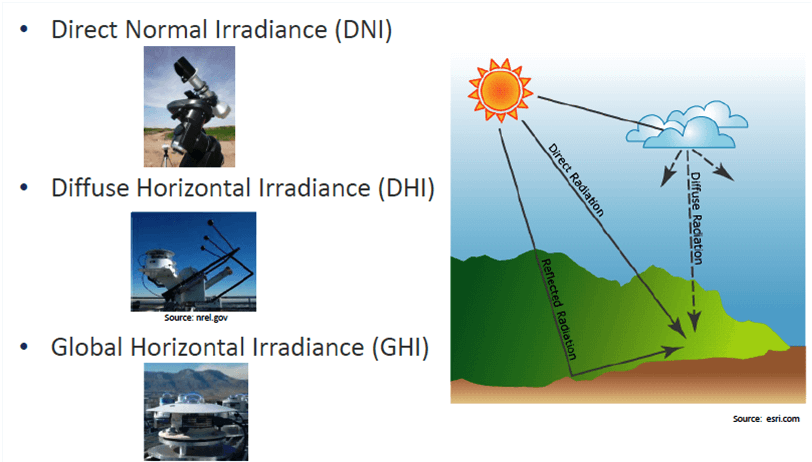There are various components of Solar Irradiance. These are explained as below:
DNI is acronym for Diffused Normal Irradiance which represents the amount of light that is coming perpendicular to surface. The surface here represents ground or something parallel to ground. This type of irradiance belongs to rays that come in a straight line from the direction of the sun at its current position in the sky. Solar collectors, panels maximize this DHI by means of tilting or rotating with angle of sun.
DHI is acronym for Diffused Horizontal Irradiance which represents solar radiation that does not arrive on a direct path from the sun, but has been scattered by clouds and particles in the atmosphere and comes equally from all directions.
GHI is acronym for Global Horizontal Irradiance which represents the total amount of shortwave radiation received from above by a surface which is horizontal (parallel) to the ground. GHI is the most important parameter for calculation of PV electricity yield. Both DHI & DNI are actually components of GHI and mathematically,
Global Horizontal Irradiance (GHI) = Direct Normal Irradiance (DNI)* cos(solar zenith angle) + Diffused Horizontal Irradiance (DHI)
GTI is acronym for Global Tilted Irradiance which represents irradiation that falls on a tilted surface. Unlike a horizontal surface which is parallel to ground, a tilted surface also receives small amount of ground-reflected radiation (REF). GTI is an approximate value for the energy yield calculation of fixed installed tilted PV panels.
Optimum angle refers to the angle at which Solar PV modules should be oriented in order to generate maximum electricity.

